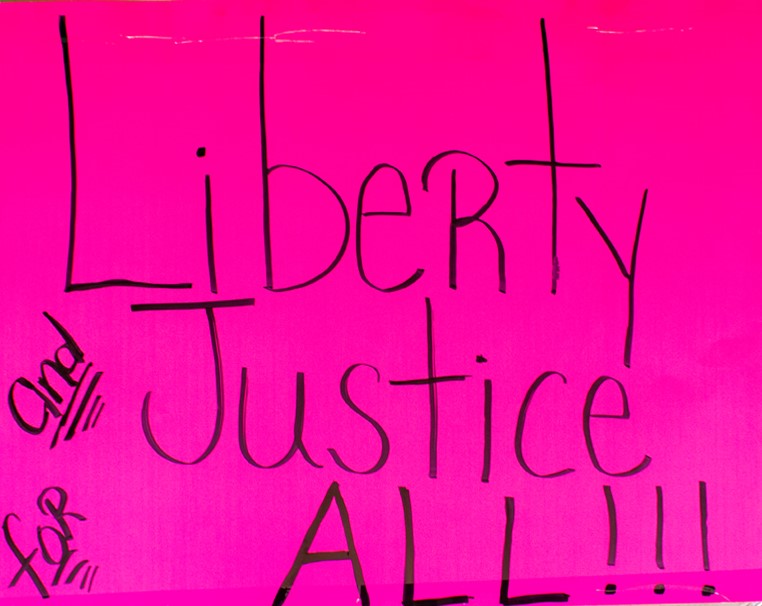Collection close-up: Many voices make a good collection
By Elizabeth Coulter, curator of collections for the Delaware Division of Historical and Cultural Affairs

There are about 104,000 objects to be found in the Delaware Division of Historical and Cultural Affairs’ Historic Collection, including art, photography, archival material, furniture, textiles, glass, ceramics, jewelry and material culture of the everyday from the late eighteenth century through contemporary times. The division currently accepts donations to this collection that support the present mission, vision and equity statement.
In addition, objects considered for the collection should present strong Delaware narratives or ties to the Johnson Victrola Company, support meaningful exhibitions, research and programs at the museum sites, and address gaps in the current holdings. A recent focus of the collection’s development supports the division’s dedication to practicing inclusive history by ensuring the many experiences and perspectives that have shaped Delaware history are represented through material culture.
With diversity of experience and perspectives comes variation in material culture. Objects could range from a painting to a toaster oven. It is not necessarily the monetary value of an object that makes it worth considering for the collection, but its historic value. What story does the object tell about a time, place, person, or event in Delaware history? How might the object deepen our understanding of history and inform future generations? Recent accessions into the collection include a Black Lives Matter protest sign, letters and photographs from an employee of the Johnson Victrola Company and a wig from an LGBTQ+ activist, among others. The division strives to create a stronger collection that is about people and for people now, and many voices make a good collection.



If you know of an object that represents a good story that you think should be considered for preservation in the state’s collection, please consider reaching out to the collections team. Below are some frequently asked questions about the process, but if you have other questions, please reach out to the collections team.
Can I send or bring my item to the division immediately?
Unfortunately, the division does not have staff available to handle unsolicited doorstep donations. All interested donors should reach out to the collections team. A curator who specializes in the appropriate collection area will follow up with potential donors. If the division is interested in learning more about the object, then an appointment to review the object will be arranged. Please note: The division reserves the right to dispose of any unsolicited materials delivered to one of its sites as per the abandoned cultural property law.
How are potential donations received?
Collection donation inquiries are reviewed by the collections staff and if the object meets the collecting criteria, it is presented to the internal and external Collections Committees. The Collections Committees are made up of staff and members of the general public with interest, competence or knowledge of art, history and/or archaeology collections and knowledge of the scope of the division’s existing collection as well as the preservation challenges associated with object care. If the object gains approval from the Collections Committees, the respective curator will send a letter of acceptance to the donor and the accession procedure begins.
How long does it take the division to review donations?
Donors should expect to receive a confirmation email within two business days that collections staff has received their collection inquiry. Curatorial review takes up to two weeks after the inquiry has been submitted, and the donor should expect to hear from a curator by the end of that period. If the division decides to present the donation to the Collections Committees, the review may take up to three or four months.
Will the division exhibit my donation?
The division may exhibit the object donated at historic sites or at peer institutions. However, only a small percentage of collections are on exhibit at any one time due to limited space and collections care museum standards. Objects in the division’s collections not on exhibit are kept in secure, climate-controlled housing areas.
Are items not on exhibit accessible to the public?
Yes, access to collections shall be provided in a nondiscriminatory and fair manner considering the range of requests received and balanced with resources, conservation, and security concerns. Please reach out to collections staff for more information.
If I donate materials to HCA, will they be returned to me at my request?
After an object is accessioned into the division’s collections, it cannot be returned to the donor. Once the Collections Committees approve the donation, a signed “deed of gift” form legally transfers ownership of the object to the division.
Does the division accept long-term loans?
The division does not accept long-term loans. The division accepts loaned objects on a short-term basis in conjunction with exhibitions and other programs.
Can donated materials be removed from the division’s collections?
Yes. With approval from the Collections Committee, the division may remove objects from the collections through the deaccessioning process. Only objects that adhere to the deaccessioning criteria in the division’s collections management policy will be considered. Deaccessioned objects may be transferred to another museum, cultural, or educational institution, destroyed, sold or disposed of in another manner that division deems fit.
Does the division do appraisals?
Responsibility for the appraisal of all gifts for tax purposes, as well as required forms and preparation, rests with the donor. Division staff do not provide appraisal services. Professional appraisers do perform this service for a fee. To find a licensed appraiser in your area, contact the American Society of Appraisers, the International Society of Appraisers or the Appraisers Association of America for a referral.
Can I receive a tax deduction for my donation?
Donations to the division are typically tax deductible. Donors should consult with a tax specialist to determine eligibility.

As the Delaware Division of Historical and Cultural Affairs’ Curator of Collections, Elizabeth Coulter participates in developing and installing exhibitions, presenting educational programs, providing access to the collections, collaborating with partnering organizations and expanding the profile and use of the collections. She holds a bachelor’s degree in art history and American studies from Rutgers University and a master’s degree in decorative arts history from George Mason University and the Smithsonian Associates.


